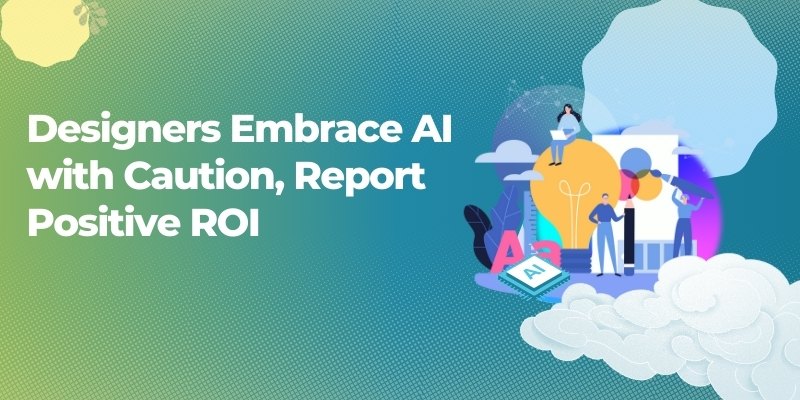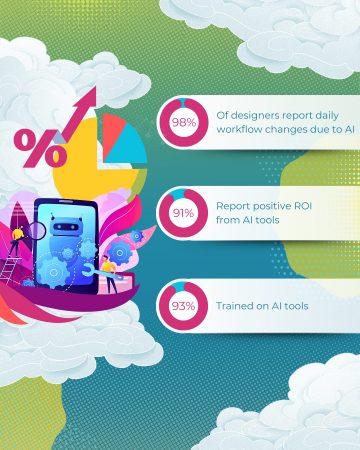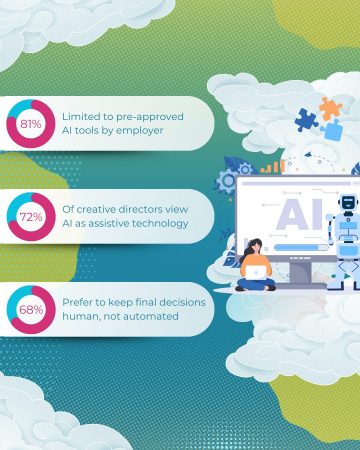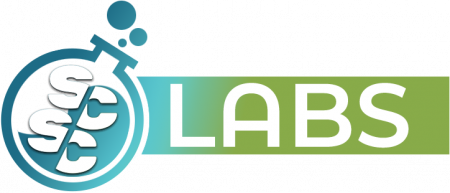
Concerns about bias and ownership persist, but AI is increasingly viewed as a powerful tool that enhances, rather than replaces, human creativity

A new survey conducted by Santa Cruz Software of over 400 graphic designers reveals artificial intelligence (AI) is radically reshaping the design sector. An impressive 98% of participants report their daily workflows have changed due to integrating AI tools. The survey highlights that designers are not only adapting to these advancements but also benefiting significantly, with 91% noting a positive return on investment (ROI) from AI adoption. Among creative directors, 72% envision AI as a powerful assistant that enhances, rather than replaces, human creativity—illustrating a collaborative future for designers and AI.To stay competitive in their field, 93% of designers have pursued AI training in an evolving AI-enhanced design landscape. Current usage trends show designers are using a variety of AI tools: 67% of respondents use image and video generation tools; 51% leverage AI for written content creation; and 45% rely on AI-powered design software. This data underscores AI’s growing role in enhancing design efficiency and driving innovation.
Download the infographic PDF here.
The ethical implications of AI in design continue to be a point of contention. While 65% of respondents view AI usage as ethical, 24% perceive it as unethical, with the remaining 11% neutral. Designers are particularly concerned about issues such as copyright and ownership (55% very concerned; 6% not concerned), originality (46% very concerned; 12% not concerned), bias (34% very concerned; 12% not concerned) and privacy (41% very concerned; 12% not concerned). These concerns likely contribute to the fact that 81% are limited to using only employer-approved AI tools, emphasizing companies already recognize the need for clear, standardized corporate policies on technology usage.
“AI brings unparalleled potential to enhance creativity, but its use must be guided by careful ethical considerations,” said Paul Melcher, AI consultant for Santa Cruz Software who recently wrote AI & Graphic Design: Navigating the Ethical Frontier. “Enterprises must establish clear standards for the tools they choose to align with their ethical AI goals. By proactively addressing issues like originality, bias, and ownership, organizations can ensure that AI supports human creativity while maintaining trust and integrity in their work.”

The survey also highlights designers’ preferences for AI’s role in specific tasks. Nearly three in four designers (74%) welcome AI assistance in generating creative ideas, while 51% would appreciate help in managing client communications and feedback. Additionally, 43% see value in using AI for repetitive tasks like image resizing. Despite these advantages, caution
remains a priority. A substantial 68% of designers are reluctant to hand off final design decisions to AI, indicating a clear preference for human oversight in creative judgment.
Design generation preferences reveal a near split, with 46% of designers favoring human-created designs and another 46% preferring AI-generated work; 8% have no preference. However, preferences vary by professional level—52% of junior designers favor AI, compared to 41% of senior designers and 33% of directors.
When considering attribution, 59% of designers are completely comfortable taking credit for AI-generated designs, though 38% express some discomfort and only 3% report complete unease.
“Our survey shows that designers increasingly view AI as an ally, enhancing creativity and productivity,” said Mark Hilton, CEO of Santa Cruz Software. “With continued advancements, AI will not only streamline workflow but also foster new avenues for creative exploration and collaboration.”
Santa Cruz Software is committed to supporting graphic designers as they integrate AI into their workflows, focusing on the tools and training necessary to empower them.

